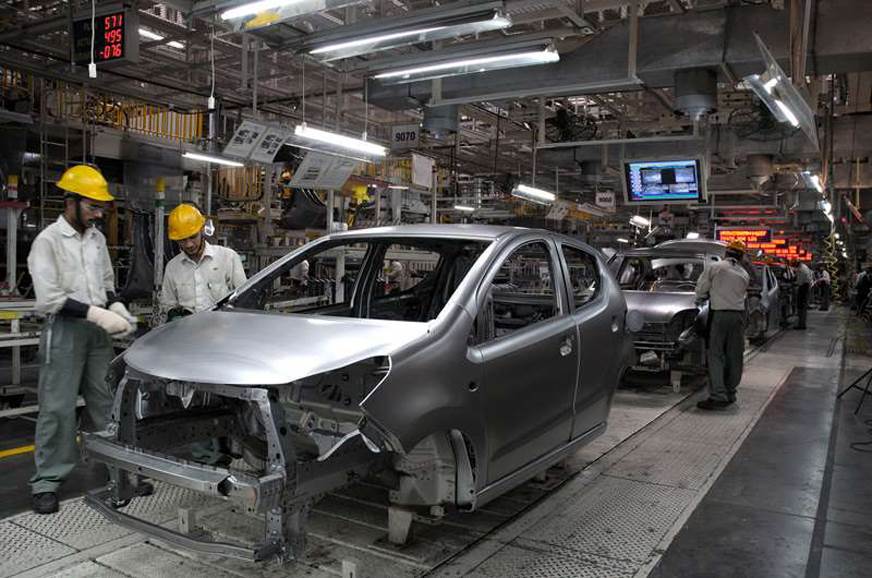When it comes to plant capacities in India, carmakers are facing a problem of plenty. Across the board, their facilities are hardly being optimised which is understandable given the prevailing market sentiment.
SAIC Motor Corp’s investments in India
Covid-19 has come on the back of a prolonged economic slowdown and even while sales are gradually getting back on track, manufacturers know only too well that it is too early to begin celebrating. This puts in perspective some reports doing the rounds that China’s SAIC Motor Corp is looking at using excess capacity at Volkswagen’s Chakan plant near Pune.
SAIC, it may be recalled, bought out General Motors’ facility in Halol and is now looking at the next phase of expansion in India under its MG Motors brand. The Chinese automaker was said to be looking at locations in the south, specifically Andhra Pradesh and Tamil Nadu, but access to a readymade plant is clearly a more viable option from the viewpoint of investments.
Call it sharing capacity or contract manufacturing, this business model makes more sense in a depressed economic scenario where it will be a potential win-win for both VW and SAIC. For the latter, this is also pragmatic given the present anti-China sentiment which is only getting more volatile by the day. Talks of war on the Chinese side will only increase anxiety and any talks of new investments in India cannot even be conceived at this point in time.
The Way forward for SAIC
This explains why Great Wall Motors is still waiting for the green signal from the Maharashtra government to acquire GM’s plant in Talegaon near Pune. Changan Automobile, likewise, is in pause mode even while talks are on with state governments in the south to set up a new facility.
In this backdrop, SAIC would much rather go in for a manufacturing route that will be easier to navigate especially in these troubled times when political tensions have spiralled. VW, which is gearing up for its India 2.0 initiative with group company Skoda taking the lead, will also have no issues with this arrangement so long as it makes economic sense to both parties.
In any case, both VW and SAIC are successful partners back in China which is the largest market worldwide for the German automaker. Both companies are familiar with each other which will make it relatively simple to leverage the relationship for opportunities in other markets like India.
This is similar to the SAIC-GM partnership in China which took a big step overseas with a 50:50 JV in India during the global slowdown, a decade ago. GM has, since, decided to exit paving the way for an SAIC entry at Halol and now Great Wall Motors at Talegaon. For the Chinese duo, acquiring a plant was a far better option than investing in a greenfield facility.
SAIC took little time in rebooting the GM Halol facility and rolling out its SUV range beginning with the MG Hector. It will hope to replicate something like this at the VW plant in Chakan assuming the two decide to get into a manufacturing alliance.
Peugeot and Hindustan Motors
There are many other cases of excess capacities in Indian automobile manufacturing plants as in the case of Renault-Nissan, Ford (both in Chennai) and many others including Indian players. It explains, therefore, why Groupe PSA (the maker of Peugeot and Citroen brands) chose to acquire Hindustan Motors’ existing facility in Tiruvallur near Chennai and make it home for its Citroen range scheduled to debut next year.
This was a far better alternative, from the viewpoint of costs and time, to setting up a new plant. The French automaker had, a decade earlier, announced its intent to kick off operations in Gujarat but then the Lehman crisis threw the entire global automobile industry into a tailspin. Peugeot called off its India project and has now revived it in its new Citroen avatar from HM’s Tiruvallur plant. The company had already brought the curtains down on its decades-old Uttarpara plant in West Bengal which was home to its Ambassador brand. It lies deserted today, since the time it stopped production in 2014.
Peugeot and Fiat
Indian automobile plants have gone through a rollercoaster ride over the past few decades which have seen a mix of shutdowns and offers of capacity sharing. Rewind to the 1990s when the country had opened its gates to investments from multinational carmakers and the first big ticket exit that happened was Peugeot in 1997. Yet, there was a time before the official closure happened when the company reached out to Fiat for a capacity sharing arrangement at its Kalyan facility near Mumbai.
It was Peugeot’s belief that the Indian car market had still not matured and it made sense to rope in another player and optimise capacity. It offered two-thirds of the plant to Fiat and was happy to confine its own production to the balance one-third. Fiat, however, was not interested since it had big growth plans for India which would see the commissioning of a new plant at Ranjangaon near Pune.
When Peugeot exited Kalyan, it initially drew the attention of Mahindra & Mahindra which saw it as a potential manufacturing location for Project Scorpio. The plan was shelved eventually and Kalyan slowly faded into oblivion.
Fiat, likewise, could not pursue its Ranjangaon plans and had to do a rescue job at Kurla near Mumbai which was home to its Indian ally, Premier Automobiles. The Italian automaker threw a lifeline to the beleaguered auto business and took control of operations here. It had little choice since its own brand, Uno, was being produced here in addition to the Premier Padmini, largely used as a taxi in Mumbai.
Eventually, Fiat called it quits to Kurla after years of struggle and joined hands with Tata Motors to return to Ranjangaon, its original location for India. The Uno and Padmini were also consigned to the archives and the Kurla facility now remains a distant memory.
Daewoo followed Peugeot in bidding adieu to India following the bankruptcy of its Korean parent in 2000-01. The plant at Surajpur near Delhi was once home to the Cielo and Matiz but was now in danger of being abandoned. GM, which bought out Daewoo globally, did try to get a foothold in Surjapur but eventually, nothing materialised. The facility, subsequently, underwent a new avatar, Argentum Motors, as part of an entrepreneurial initiative. Even this did not last the course and the Daewoo plant, like the Peugeot facility in Kalyan, gradually became a footnote in history.
Common Ground
Now, fast forward to the present and it is more than evident that two heads are better than one when it comes to optimising capacities at an automobile plant. Of course, it is not a simple task by any stretch of imagination since it will call for high levels of comfort and trust between the parties involved and, more importantly, business compatibility.
Global alliances make the job a lot easier as in the case of Toyota-Suzuki where the former has enough spare capacity at its Bidadi plant near Bengaluru. This will be used to manufacture models sourced from Maruti Suzuki. It will be interesting to see if the SAIC-VW model in China can be replicated in India or if Changan will, likewise, explore the option of using an existing plant for its India business. These are interesting times for new partnerships to possibly emerge in the Indian car plant landscape.






















